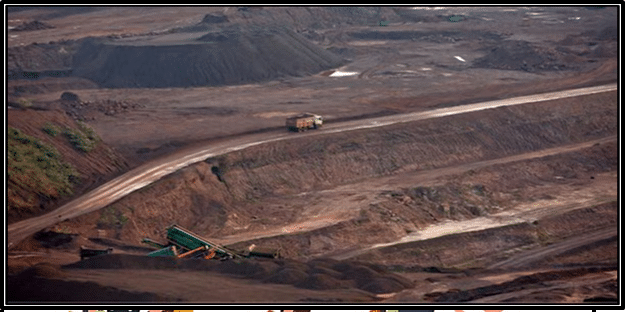MINING AND POWER OF STATES
source:firstpost.com
Relevance: GS 2 – Indian Constitution, Polity, Governance, GS 3 – Economy
Focus:
- Analysis of the Supreme Court’s ruling on states’ power to tax mining activities.
- Examination of the legal framework, implications, and impact on federalism and state autonomy.
- Clarification of the distinction between taxes and royalties under Indian law by the Supreme Court, empowering states to tax mining activities and collect royalties.
Key Issues
Definition of Royalty:
- Legal Interpretation: Royalty is a fee paid to the owner of a product for the right to use that product. In mining, it is the payment made by mining companies to the state for mineral extraction.
- Distinction from Tax: The court clarified that royalty is not a tax. Taxes are levied by the government as part of its sovereign power, while royalties are payments for the use of resources.
Legal Framework:
- Mines and Minerals (Development and Regulation) Act, 1957 (MMDR Act): Governs the regulation of mines and mineral development, requiring lessees to pay royalties for minerals extracted.
- Union vs. State Powers: Entry 54 of the Union List grants the Centre power to regulate mines and mineral development, whereas Entry 23 of the State List allows states to levy taxes on mineral rights.
Impact Analysis
State Autonomy:
- Empowerment: The ruling empowers states to generate revenue from their natural resources, enhancing fiscal autonomy. The Union Budget 2023-24 estimated a significant increase in revenue from royalties and mining-related activities.
- Economic Development: States can use revenue from royalties to fund local development projects and infrastructure. The Budget allocated ₹10,000 crore to support states in implementing effective mining regulation and development projects.
Federalism:
- Centre-State Relations: The judgement reinforces federal structure by respecting constitutional division of powers between Centre and states.
- Coordination: Effective coordination between Centre and states is crucial for sustainable development of mineral resources.
Mining Sector:
- Clarity for Investors: The ruling provides clarity and stability for investors in the mining sector, encouraging investment and growth. The Budget allocated ₹12,300 crore for mining infrastructure development, focusing on modernization and sustainability.
- Regulation and Compliance: Ensures mining activities are conducted within a clear legal framework, promoting compliance and accountability.
Important Associated Constitutional Provisions
Case Studies:
|
Broader Implications
Revenue Generation:
- Fiscal Health: The ability to levy royalties provides states with a significant source of revenue, improving fiscal health.
- Public Services: States can utilise revenue to enhance public services and infrastructure, benefiting local communities. The Budget earmarked ₹5,000 crore for an Environmental Protection Fund to mitigate the impact of mining activities and promote sustainable practices.
Legal Clarity:
- Judicial Precedent: The ruling sets a judicial precedent, providing legal clarity on the distinction between taxes and royalties.
- Regulatory Stability: Ensures regulatory stability, essential for orderly development of the mining sector.
Economic Impact:
- Investment Climate: A clear and stable legal framework attracts investment, boosting economic growth in the mining sector.
- Employment Generation: Increased investment in mining leads to job creation and economic opportunities for local communities.
Environmental Considerations:
- Sustainable Practices: States have the responsibility to ensure that mining activities are conducted sustainably, minimising environmental impact.
- Regulation and Oversight: Effective regulation and oversight are necessary to balance economic development with environmental conservation.
Social Equity:
- Community Benefits: Ensuring local communities benefit from mining activities through employment opportunities and social welfare programs.
- Inclusive Growth: Using mining revenues to support education, healthcare, and infrastructure development in mining-affected areas.
Transparency and Accountability:
- Public Disclosure: Implementing mechanisms for transparent reporting of royalty payments and their utilisation.
- Anti-Corruption Measures: Strengthening anti-corruption measures to prevent misuse of mining revenues.
Future Directions:
Strengthening State Capacities:
- Regulatory Framework: Enhancing regulatory framework at the state level to ensure efficient collection and utilisation of royalties.
- Capacity Building: Building capacities of state agencies to effectively manage and regulate mining activities.
Promoting Sustainable Mining:
- Environmental Safeguards: Implementing stringent environmental safeguards to ensure sustainable and environmentally friendly mining activities.
- Community Benefits: Ensuring local communities benefit from mining activities through employment opportunities and infrastructure development.
Centre-State Collaboration:
- Policy Coordination: Strengthening coordination between Centre and states to develop a cohesive policy framework for the mining sector.
- Resource Sharing: Promoting sharing of best practices and resources between states to enhance overall efficiency of mining operations.
Technological Advancements:
- Innovation in Mining: Encouraging adoption of advanced technologies in mining to improve efficiency and reduce environmental impact.
- Data Management: Leveraging data analytics and digital tools for better management and regulation of the mining sector.
Addressing Local Concerns:
- Stakeholder Engagement: Engaging with local communities and stakeholders to address concerns related to mining activities.
- Corporate Social Responsibility (CSR): Encouraging mining companies to undertake CSR initiatives that benefit local communities.
Conclusion:
The Supreme Court’s ruling on the power of states to tax mining activities underscores the importance of federalism and state autonomy in India’s governance framework. By providing legal clarity and empowering states, the judgement paves the way for sustainable and inclusive development in the mining sector.
Source: The Hindu
Mains Question
Discuss the implications of the Supreme Court’s ruling on the power of states to tax mining activities. How does this judgement impact federalism and state autonomy in India? (250 words)




